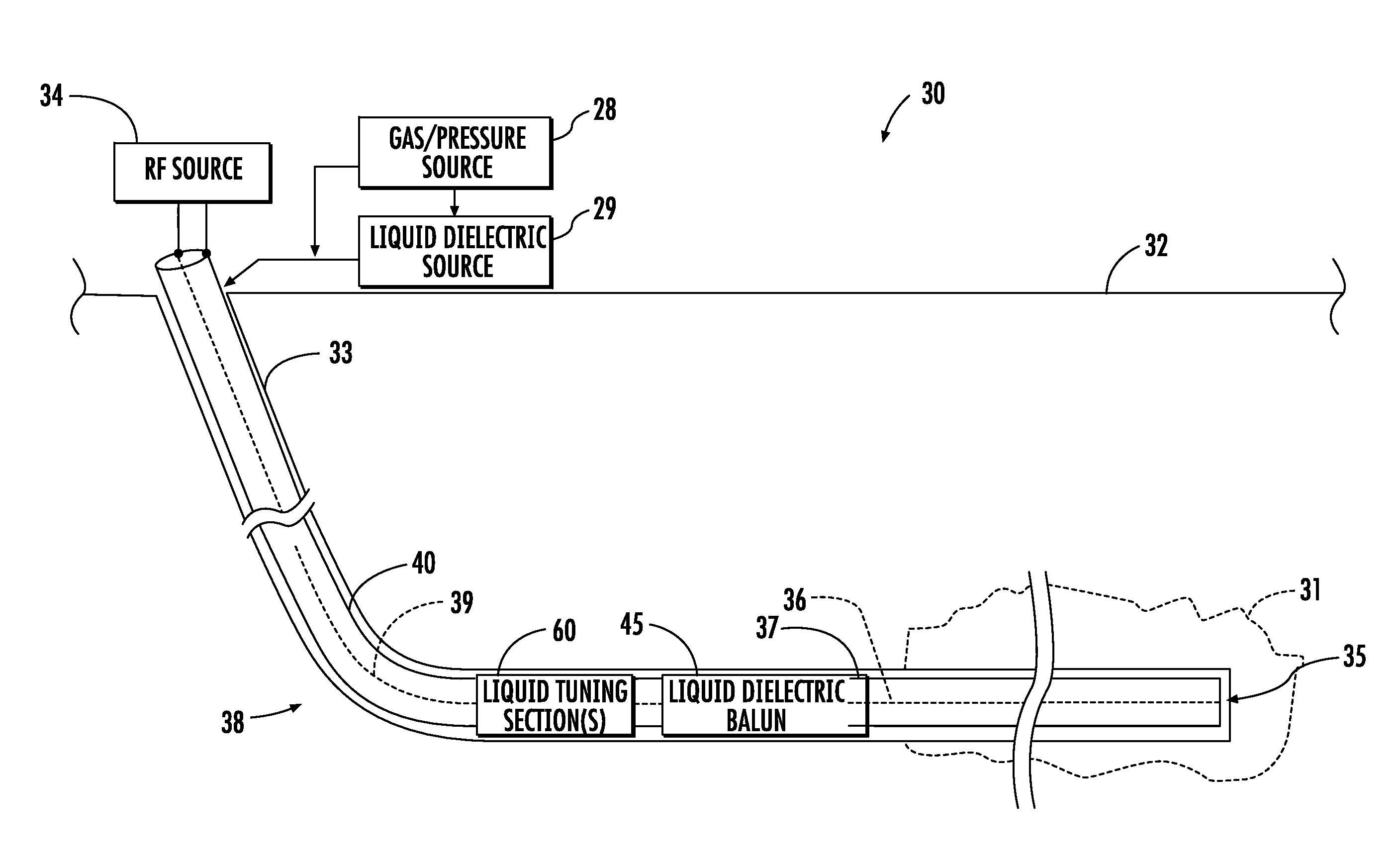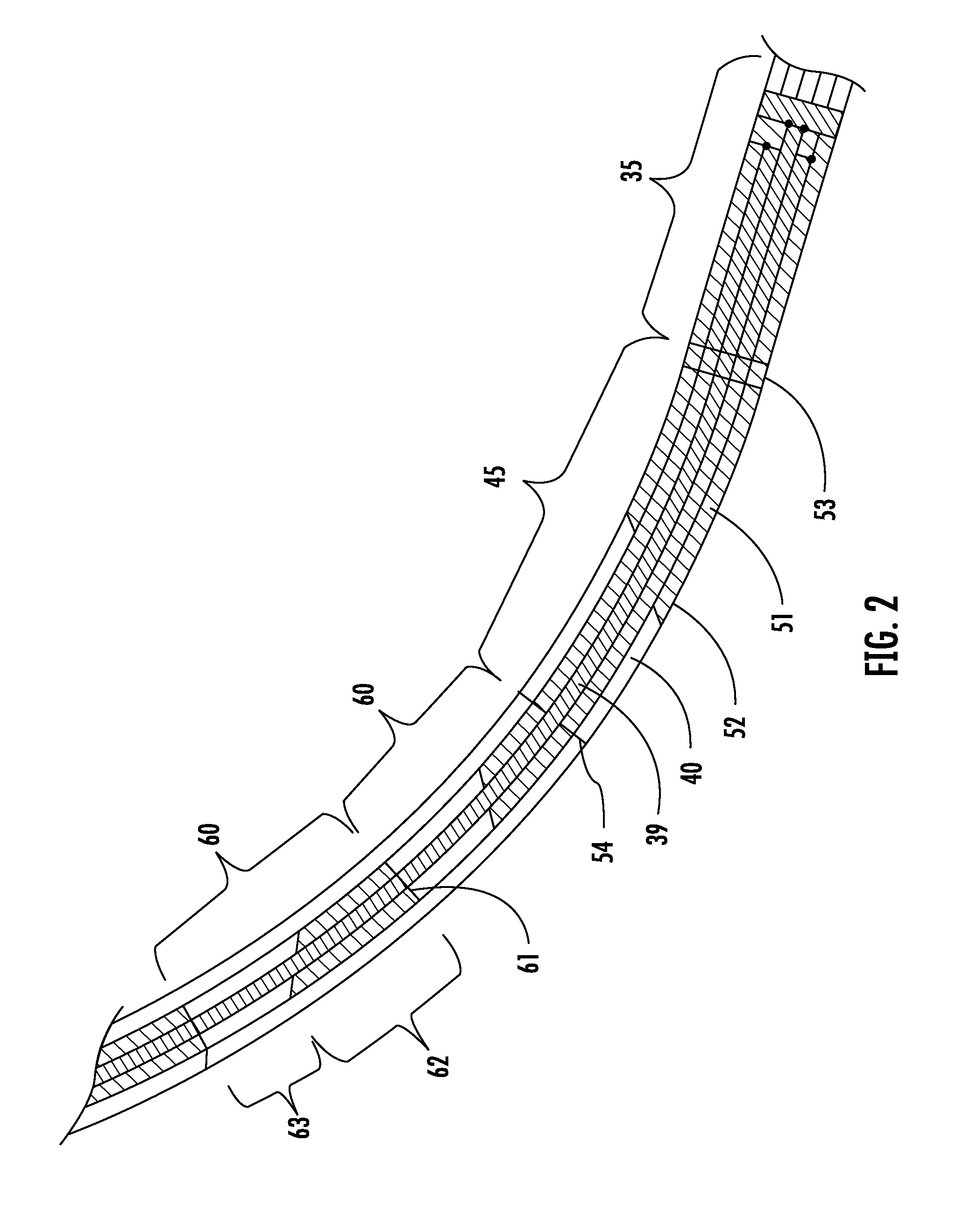Apparatus for heating a hydrocarbon resource in a subterranean formation including a fluid balun and related methods
a technology of hydrocarbon resources and apparatus, applied in the direction of fluid removal, borehole/well accessories, insulation, etc., can solve the problems of increasing energy consumption worldwide, affecting the operation efficiency of the apparatus, so as to achieve the effect of improving the operating characteristics
- Summary
- Abstract
- Description
- Claims
- Application Information
AI Technical Summary
Benefits of technology
Problems solved by technology
Method used
Image
Examples
Embodiment Construction
[0031]The present invention will now be described more fully hereinafter with reference to the accompanying drawings, in which preferred embodiments of the invention are shown. This invention may, however, be embodied in many different forms and should not be construed as limited to the embodiments set forth herein. Rather, these embodiments are provided so that this disclosure will be thorough and complete, and will fully convey the scope of the invention to those skilled in the art. Like numbers refer to like elements throughout.
[0032]Referring initially to FIG. 1, an apparatus 30 for heating a hydrocarbon resource 31 (e.g., oil sands, etc.) in a subterranean formation 32 having a wellbore 33 therein is first described. In the illustrated example, the wellbore 33 is a laterally extending wellbore, although the system 30 may be used with vertical or other wellbores in different configurations. The system 30 further includes a radio frequency (RF) source 34 for an RF antenna or tran...
PUM
 Login to View More
Login to View More Abstract
Description
Claims
Application Information
 Login to View More
Login to View More - R&D
- Intellectual Property
- Life Sciences
- Materials
- Tech Scout
- Unparalleled Data Quality
- Higher Quality Content
- 60% Fewer Hallucinations
Browse by: Latest US Patents, China's latest patents, Technical Efficacy Thesaurus, Application Domain, Technology Topic, Popular Technical Reports.
© 2025 PatSnap. All rights reserved.Legal|Privacy policy|Modern Slavery Act Transparency Statement|Sitemap|About US| Contact US: help@patsnap.com



